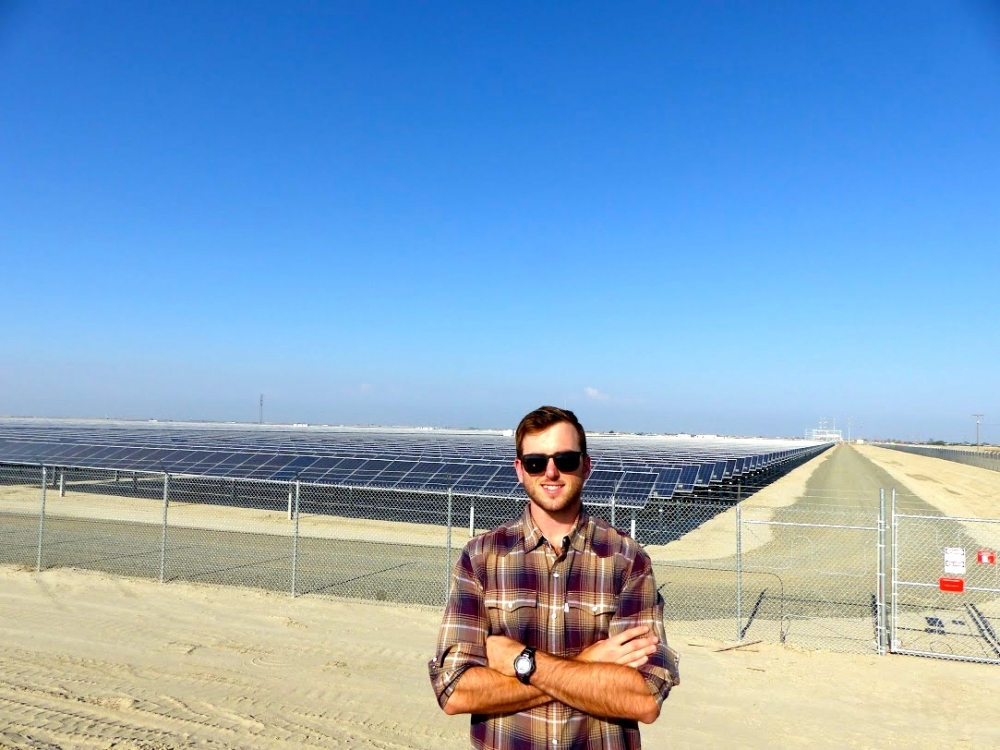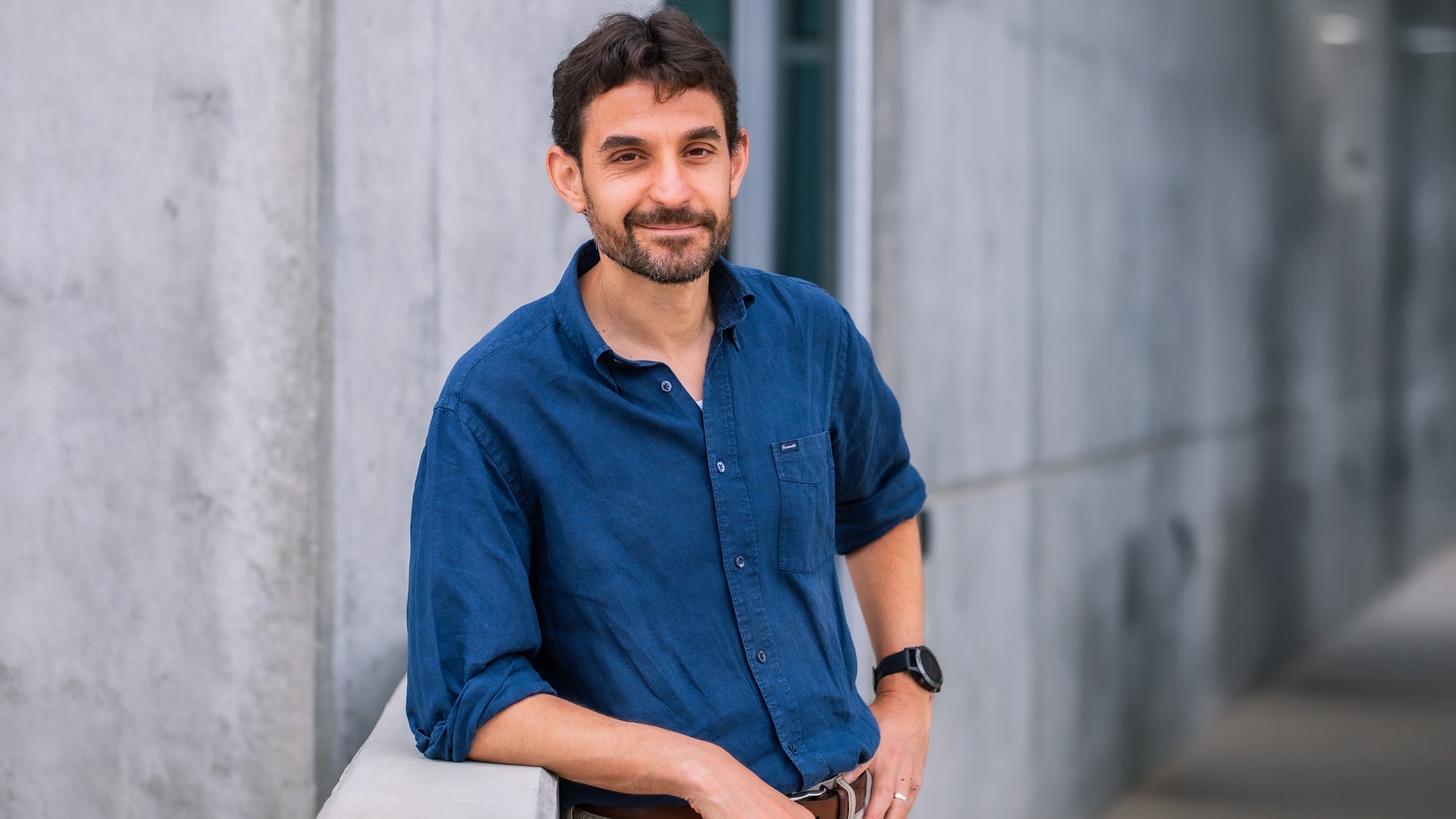Where to Place Utility-Scale Solar in California?
Earlier this summer, two graduates from UC Santa Barbara’s Bren School of Environmental Science & Management stood in California Governor Jerry Brown’s office and spoke to a large crowd of state-agency representatives, farmers, solar companies, representatives of nongovernmental organizations and others interested in solar power, conservation and California’s energy future.
The students presented findings from “Wildlight,” their master’s of environmental science and management group project, for which they had created a spatial model identifying compatible areas for utility-scale solar development in California’s San Joaquin Valley. Ramping up solar-power generation is important in meeting the state’s renewable portfolio standard, which calls for renewable energy to make up 33 percent of California’s total energy portfolio by 2020. This transition toward clean energy will become even more pressing when Governor Brown’s goal of 50 percent renewable generation by 2030 is written into law this year.
How did Bren student Dustin Pearce, who was born in the tiny Central Valley town of Corcoran (pop. 12,000) end up heading to Sacramento with his project colleague Sam Young to present their group project in the halls of government?
Pearce explained that when the Wildlight team — which included fellow Bren graduates Jane Cowan, Andrew Gwin and Graham Wesolowski — was working on the project, the California Office of Planning and Research (OPR) was preparing to launch a parallel effort to identify areas of least conflict for utility-scale solar development. That process, which began this past June, relies heavily on stakeholder values and analyses to identify such areas.
The students interacted extensively with stakeholders — many of whom were in the room in Sacramento — but in working for their group project client, Defenders of Wildlife, they took a modeling approach similar to previous analyses done by Bren professor Frank Davis, who is also the director of UCSB’s National Center for Ecological Analysis and Synthesis. The method had been used in California’s Desert Renewable Energy Conservation Plan (DRECP), a landscape-scale planning process that addressed energy development and species conservation across 22 million acres. The similarities between the DRECP process and that of the Wildlight team is what drew so much interest from the OPR planning team and ultimately led Pearce and Young to the governor’s office for the presentation.
The Bren graduates spoke to a room of 70 to 80 high-level stakeholders, including executive directors and other senior officials from The Nature Conservancy, Defenders of Wildlife, the California Native Plant Society, The Audubon Society, the Sierra Club, the National Resources Defense Council and more. Southern California Edison, Pacific Gas & Electric and several solar-power developers also sent representatives, who joined county officials from the San Joaquin Valley, the director of the California State Farm Bureau, local farm bureau representatives and large farmers from the district that Wildlight had identified as a good location for utility-scale solar.
“When we were introduced as the ‘all-star team from Bren,’ I thought to myself, ‘The pressure’s on right now,’” recalled Pearce, who said the team was confident because the group included the same stakeholders they had consulted for the project.
According to Pearce, interacting with stakeholders was critical to understanding their values and concerns and avoiding cultural or historical blind spots while ensuring solutions fit the reality on the ground. For him, engaging with stakeholders had a particularly personal significance.
“My hometown is big into farming,” Pearce said. “We’ve seen solar happening there, and a lot of people have rooftop solar. It’s something the community and the culture can accept, but it has to be done in the right way and include their interests. That’s why we have all the stakeholders involved.’’
The Wildlight presentation was a success.
The Sacramento presentation was only the beginning of the project’s impact. In the following weeks, the team had one-on-one meetings with officials from various agencies interested in using their model and others like it to support planning in California. What was supposed to be a short meeting with the Wildlife Conservation Board — part of the California Department of Fish and Wildlife — turned into a two-hour exchange. “There has been lots of excitement about what we’re doing and its application,” Pearce said.
In the wake of all that activity, Pearce was contracted by OPR planners to remain at the Bren School as a visiting researcher for several months after graduating. “The goal is to put some wheels on this and get it adjusted and implemented so that state agencies and stakeholders can use it,” Pearce said. “We’re super-excited about being able to have an impact.”
The final decision on least-conflict lands will be determined by the stakeholder-driven planning process, but the outcome may have broader impacts. Going forward, those impacts might include changing how environmental conservation, energy planning and agricultural preservation are accomplished in California — collaboratively.





